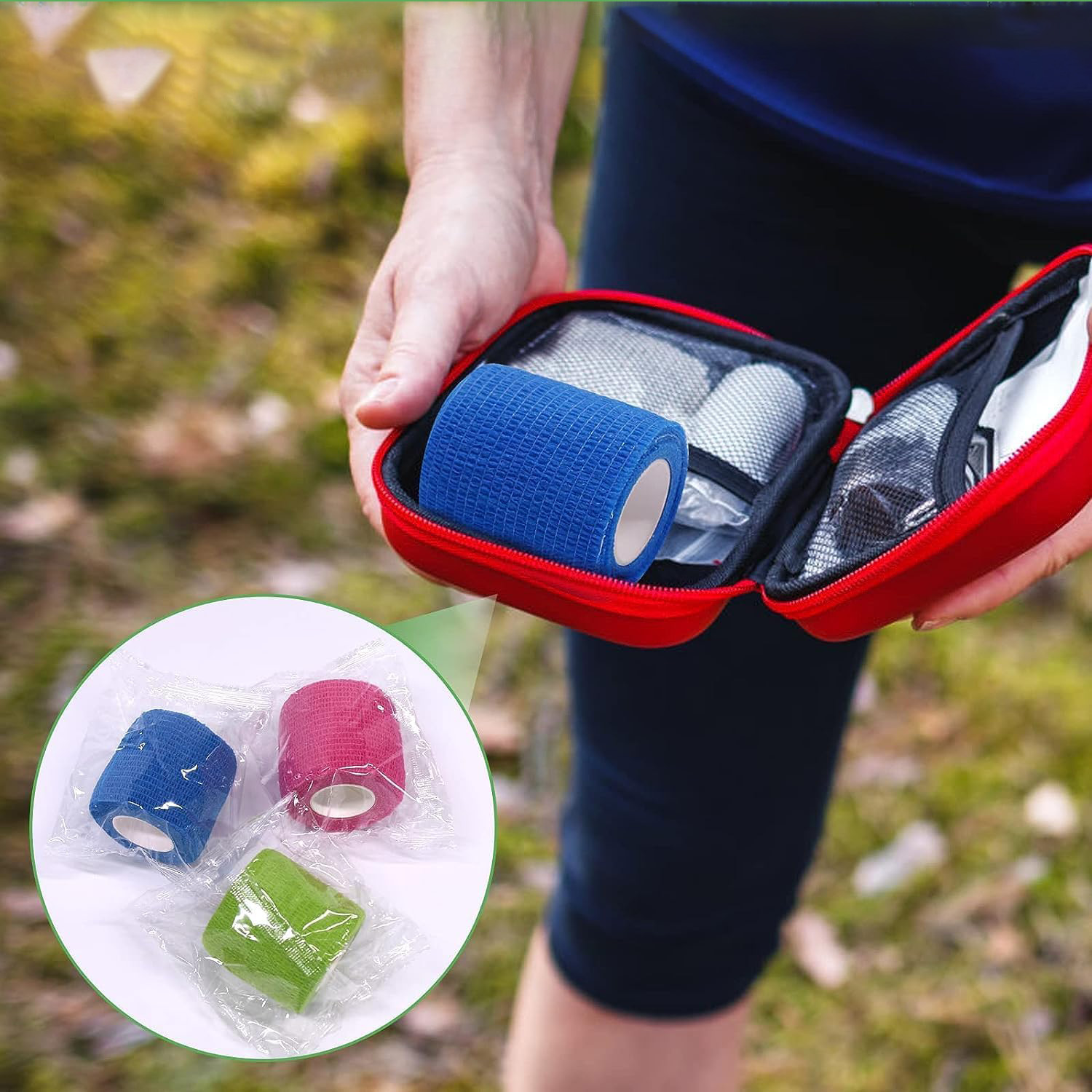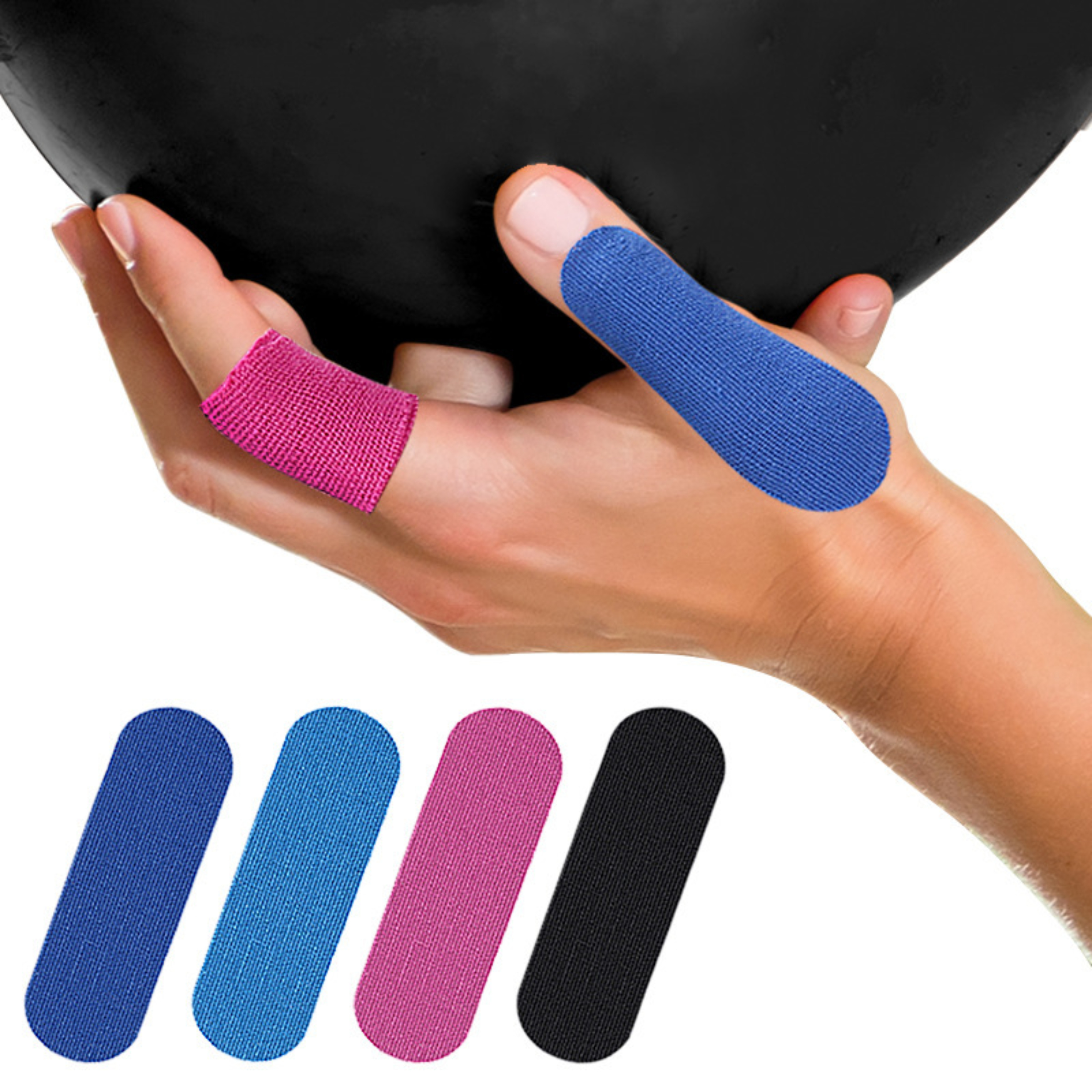News

How Do Self-Adhesive Bandages Stick Without Adhesive Glue?
Self-adhesive bandages are one of those quiet yet brilliant inventions in modern wound care. They hold firmly, stretch comfortably, and stay in place through movement — all without the need for sticky adhesive glue. For anyone who has ever dealt with the frustration of traditional bandages that pull at the skin or lose grip when exposed to sweat, the concept of a self-adhering wrap seems almost magical. But in truth, the mechanism behind their stickiness is rooted in simple physics, material science, and clever design engineering.
Understanding What Makes Self-Adhesive Bandages Different
Before examining the “how,” it’s important to understand what self-adhesive bandages are and how they differ from traditional adhesive bandages.
A traditional adhesive bandage—like the common strip bandage—relies on a layer of chemical adhesive applied to a backing material. This adhesive sticks directly to the skin, ensuring that the bandage stays in place. However, the downside is clear: the adhesive can cause skin irritation, leave behind residue, or lose effectiveness if the skin is damp or oily.
A self-adhesive bandage, on the other hand, does not use any chemical glue at all. Instead, it adheres to itself — not to skin, hair, or clothing. When you wrap it around a limb or joint, it clings by a property known as cohesion rather than adhesion. The surface texture and material composition allow the layers of bandage to grip one another tightly while remaining non-sticky to other surfaces.
The Science Behind Self-Adhesion
To understand why self-adhesive bandages can stick without glue, let’s look at the material science that enables this function.
1. Cohesive Elastic Fabric
Self-adhesive bandages are typically made from woven or nonwoven elastic fabric that contains natural or synthetic latex, elastic fibers, and micro-textured surfaces. These components work together to create a cohesive bond when the bandage overlaps itself.
- Cohesion vs. Adhesion:
- Cohesion refers to the attraction between molecules of the same material.
- Adhesion refers to the attraction between molecules of different materials.
In this case, cohesive bandages use molecular attraction and surface friction between overlapping layers of the same fabric. The result is a strong, self-gripping hold that doesn’t rely on glue.
2. Microscopic Surface Texture
If you looked at a self-adhesive bandage under a microscope, you’d notice a fine, slightly rough surface. This micro-texture increases friction between layers, enhancing the mechanical grip. When you stretch and wrap the bandage, the tiny loops and ridges interlock, forming a secure bond.
This “mechanical interlocking” is one of the most critical reasons why the material stays together so effectively, even under tension.
3. Elastic Recovery and Pressure
Elasticity plays a vital role in the sticking process. As the bandage is stretched and wrapped, it exerts gentle compressive pressure. This pressure maintains contact between the overlapping surfaces, strengthening the cohesive bond.
When released, the bandage attempts to return to its original shape, pulling the layers together even more tightly. This continuous tension helps it stay in place during movement or mild stress.
4. Latex or Synthetic Polymers
Many self-adhesive bandages incorporate latex or latex-free synthetic alternatives like polyurethane or polyisoprene. These materials naturally exhibit a degree of tackiness — not the sticky type you’d find on tape, but a subtle cling that aids cohesion.
In latex-free varieties, manufacturers engineer the fabric with cohesive coatings that mimic the cling of latex without triggering allergic reactions. This innovation ensures that the bandages are suitable for all skin types, including those with sensitivities.
Why No Glue Is an Advantage
At first glance, a bandage without glue might seem less secure. In reality, the absence of adhesive offers numerous benefits, both practical and hygienic.
1. Gentle on Skin
Without adhesive glue, there’s no risk of painful removal or irritation. People with delicate or sensitive skin — such as the elderly, children, or those with allergies — find self-adhesive bandages far more comfortable.
The bandage doesn’t pull at hair or remove skin cells upon removal, making it ideal for frequent dressing changes.
2. Breathable and Comfortable
Because there’s no glue sealing the fabric, self-adhesive bandages are more breathable. Air circulation allows moisture and heat to escape, reducing the chance of skin maceration or itching.
3. Reusable and Adjustable
Since the bandage relies on mechanical grip rather than chemical adhesion, it can be readjusted or reused during a single application process. You can unwrap, reposition, and rewrap without losing grip strength.
4. Works on Hairy or Moist Skin
Traditional adhesive bandages struggle to stick to hairy or sweaty areas. Self-adhesive bandages, however, adhere to themselves — so they function well regardless of skin condition.
5. Residue-Free Removal
There’s no sticky residue after removal. The skin remains clean, and clothing or bedding isn’t damaged by leftover adhesive.
Applications Beyond Simple Wound Care
Self-adhesive bandages are remarkably versatile. They’re used in medical care, sports, veterinary medicine, and even daily activities. Below are some of their common applications:
1. Wound Dressing Retention
They hold gauze pads and wound dressings in place securely without tape. The cohesive wrap ensures the dressing doesn’t shift while allowing flexibility.
2. Compression Therapy
In managing swelling, sprains, or varicose veins, self-adhesive bandages provide consistent compression without constriction. The elasticity allows precise tension control for comfort and therapeutic effect.
3. Sports and Muscle Support
Athletes use self-adhesive wraps for joint stabilization and muscle support. The cohesive hold keeps wraps firm during motion without cutting off circulation.
4. Veterinary Use
One of the earliest popular uses of self-adhesive bandages was in veterinary medicine. They are ideal for wrapping animal limbs or injuries because they don’t stick to fur.
5. Everyday Household Use
From securing ice packs to bundling objects, self-adhesive bandages have a place beyond the medical cabinet. Their adaptability makes them a useful tool for minor household fixes.

Proper Application: Getting the Most Out of Self-Adhesive Bandages
To maximize performance, applying a self-adhesive bandage correctly is key. Here’s a step-by-step guide:
-
Clean and Dry the Area
Even though the bandage doesn’t rely on glue, a clean surface ensures better stability. -
Anchor the First Wrap
Start with one or two gentle loops around the area without excessive tension. This forms a secure base. -
Overlap Each Layer
As you continue wrapping, overlap each layer by about 50%. The overlapping sections create the cohesive bond that holds the wrap in place. -
Maintain Even Tension
Stretch the bandage slightly to apply gentle compression. Avoid over-tightening, which could restrict circulation. -
Secure the End
When finished, press the last section gently into the wrapped surface. It will adhere firmly to itself without clips or fasteners. -
Check for Comfort and Circulation
The bandage should feel snug but not tight. Fingers or toes should not tingle or turn cold.
Maintenance and Care Tips
Although disposable, self-adhesive bandages can sometimes be reused temporarily during short-term applications. To extend their functionality:
- Avoid contamination: Keep them clean and dry during use.
- Store properly: Keep unused bandages in a cool, dry environment away from sunlight to maintain elasticity.
- Do not wash and reuse: Washing can damage the cohesive surface, reducing effectiveness.
- Replace when stretched out: Once the elasticity diminishes, the cohesive strength will weaken.
Common Misconceptions About Self-Adhesive Bandages
1. “They don’t stick well because there’s no glue.”
In reality, when applied correctly, self-adhesive bandages hold extremely well. Their mechanical cohesion can often outlast traditional adhesive wraps under similar conditions.
2. “They’re all latex-based.”
While some are, many modern options are latex-free to avoid allergic reactions.
3. “They’re only for medical use.”
These bandages are highly multipurpose — used by athletes, veterinarians, and even craftspeople for temporary binding solutions.
4. “They lose grip quickly.”
Proper tension and correct overlapping ensure that the cohesive bond remains strong for hours or even days, depending on the use.
Innovations in Self-Adhesive Bandage Technology
Over the years, manufacturers have continued to improve the performance and comfort of self-adhesive bandages through material innovation.
Some modern versions include:
- Latex-free synthetic polymers for hypoallergenic properties.
- Textured microfiber surfaces for enhanced grip.
- Moisture-resistant weaves that maintain hold even when wet.
- Eco-friendly materials that biodegrade faster than synthetic fabrics.
These advancements aim to provide safer, more sustainable, and more comfortable options for both medical professionals and everyday users.
Conclusion: The Elegance of Cohesion Over Adhesion
The ability of self-adhesive bandages to stick without glue is a perfect example of design efficiency in healthcare materials. By harnessing cohesive forces, elasticity, and micro-textured surfaces, these bandages achieve secure wrapping without compromising comfort or skin integrity.
They represent the ideal balance between science and practicality — proof that innovation doesn’t always mean complexity. Sometimes, it’s about refining natural principles like tension, friction, and cohesion to create something simple yet remarkably effective.
Whether you’re an athlete seeking support, a medical worker treating wounds, or simply someone managing a minor injury at home, understanding how self-adhesive bandages work empowers you to use them more effectively and comfortably. They may lack glue, but they certainly don’t lack ingenuity.

- ASHER.CAO:+86-176 2548 7782 Asher.cao@healthline-medical.com
- HARONJU:+86-198 5296 4937 haronju@healthline-medical.com
- DI.TIAN:+86-183 0527 6521 Di.tian@healthline-medical.com
- Tel:+86-512-6289 3223
- Mob:+86-176 2548 7782 / +86-198 5296 4937 / +86-183 0527 6521
-
Email:zhujun@healthline-medical.com
sales@healthline-medical.com
- Whatsapp / Wechat:+86-176 2548 7782 ; +86-198 5296 4937; +86-183 0527 6521
- Skype:+86-176 2548 7782 / +86-183 0527 6521
Copyright © 2025 SUZHOU HEALTHLINE MEDICAL PRODUCTS CO., LTD
All Rights Reserved.

The information provided on this website is intended for use only in countries and jurisdictions outside of the People's Republic of China.


 English
English Español
Español русский
русский عربى
عربى











